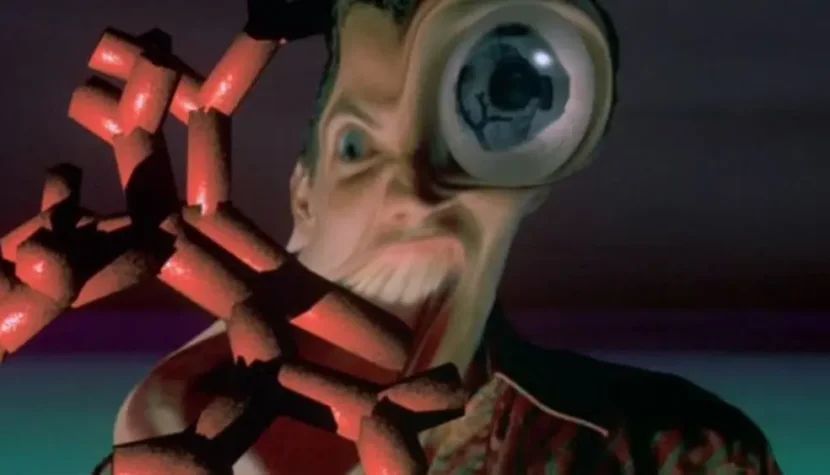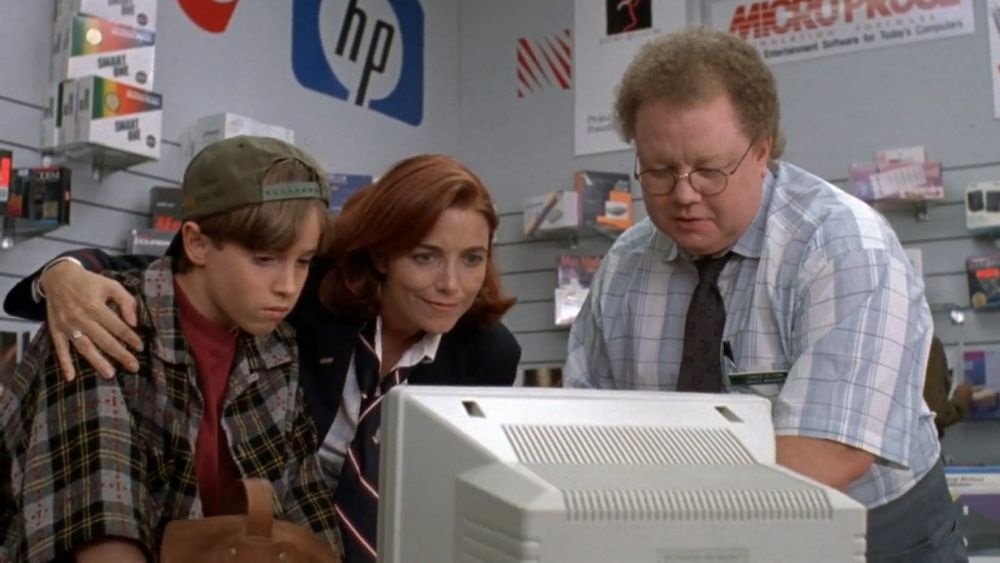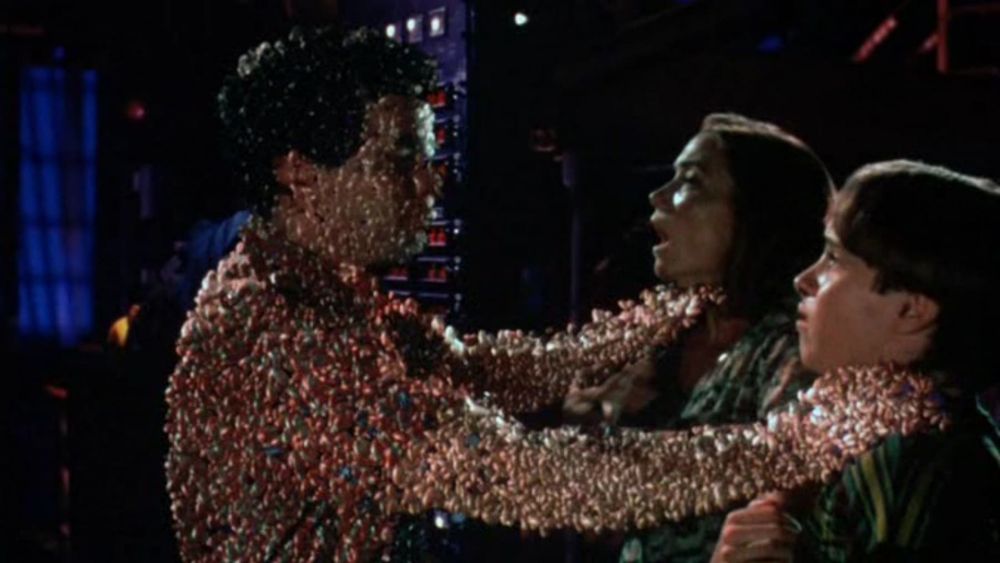GHOST IN THE MACHINE. Science Fiction So Bad It’s Good

The plot of “Ghost in the Machine” can be summed up with a paraphrase of the infamous train derailment report: “The killer was bad, and computers, microwaves, and hair dryers were bad too.”
The residents of Cleveland are being terrorized by a serial killer known as the “Address Book Killer,” who locates his victims through stolen address books. Behind these crimes is Karl Hochman, an unassuming computer store employee and brilliant hacker, who one stormy night is involved in a serious car accident. During an MRI scan at the hospital, a power surge occurs, and while Karl’s body dies, his consciousness is transferred into a computer. The killer continues his spree, using various network-connected and electrical devices to murder. His new targets include acquaintances of Terry Munroe, a single mother raising her teenage son, Josh: her boss Frank, friend Elliot, and babysitter Carol. The police dismiss the deaths as accidents, but Josh and Terry suspect Karl, and they find help in Bram Walker, a disgraced hacker.

Reportedly, the idea for “Ghost in the Machine” was born in the minds of screenwriters William Osborne and William Davies back in 1987, after reading an article about a computer program called “Skeleton Key”, which allowed users to spy on computer networks and extract data without the owners’ knowledge. 20th Century Fox paused the film’s production due to its similarities with Wes Craven’s “Shocker” (1989) but resumed it after the box-office success of Brett Leonard’s “The Lawnmower Man” (1992). Indeed, “Ghost in the Machine” feels like a blend of these two films with hints of Steven Lisberger’s “Tron” (1982), Michael Mann’s “Manhunter” (1986), and the “Nightmare on Elm Street” horror series. No surprise there: director Rachel Talalay’s first film was “Freddy’s Dead: The Final Nightmare” (1991), the sixth installment in the series—and considered one of the weakest by fans. “Ghost in the Machine”, however, is even worse than “Freddy’s Dead”.

Fiction—whether in film or literature, and not only in horror or science fiction—requires a suspension of disbelief. The creator presents a certain reality, and the audience agrees to accept it—as long as the creator follows the internal logic of that reality. The starting point of Talalay’s film—the transfer of human consciousness into a computer network—may seem slightly less absurd today than it did thirty years ago (though still just as unachievable). The problem arises when the virtual killer starts using any random device to murder: microwaves, dishwashers, electric pool covers, and various machines that not only aren’t connected to a network but also appear to have features the manufacturer never intended, like a hand dryer shooting flames. In this reality, there seems to be no distinction between internet, power, and gas networks.
So perhaps the world of “Ghost in the Machine” is an alternative reality, where a virtual killer can be stopped by taping over electrical outlets displaying a flashing red “Do Not Enter” sign? Where questions like “Have you ever angered a hacker?” don’t evoke a smirk of disbelief? Where a Kevin Mitnick-inspired but older, gruff-looking “computer genius” earnestly claims that “You can’t kill anyone with a computer,” a man cackles like a maniac as his car flips over, and police shoot blindly toward a house because of a short circuit on a nearby high-voltage line, despite the fact that its crackle sounds nothing like gunfire? Many questions, few answers. One thing is certain: the overload of absurdity leaves an impression, making “Ghost in the Machine” a film so bad that it’s almost good.

